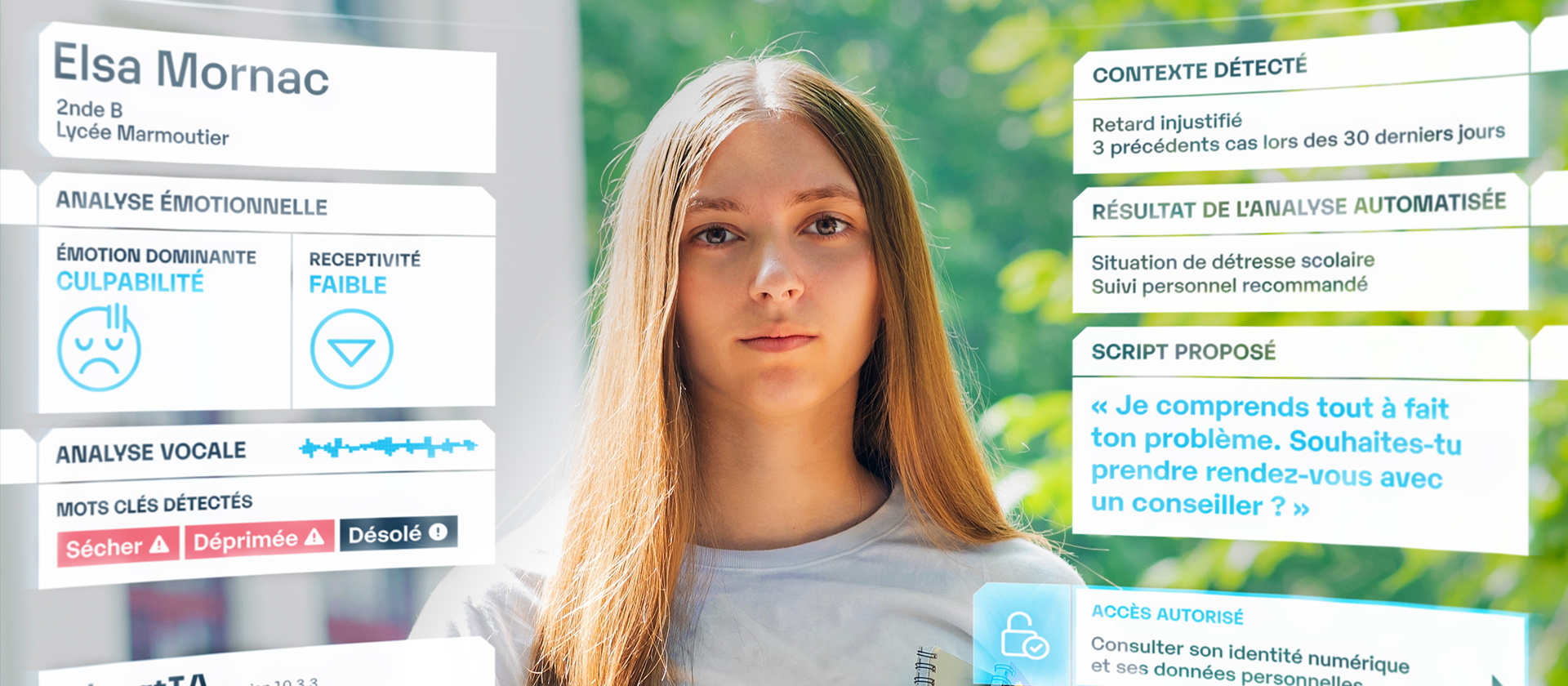
A future-ready training plan
A training plan for local public action to face futures
The Centre-Val de Loire region (France) engaged in a future exploration exercise to rethink its 2023–2026 training plan. Our studio partnered with the National Centre for Local Public Service (CNFPT) for a Design Fiction approach, with the ambition of complementing the traditional needs assessment carried out by the local authority’s human resources department.
With this forward-thinking approach, the aim was not only to inspire but also to stress-test the new training plan through two design choices:
- Identifying the blind spots of the training plan, in order to detect the long-term skills and capabilities the Region may need to face the challenges of the coming decade.
- Exploring the imaginaries of territorial public action, by considering new and unexpected skills and behaviours within the authority, while also re-examining the ethics of its current methods of action.
Following a phase of prospective research, three transformative themes were selected for exploration: ecological redirection, automation of public action, and resilience in the face of a state of permanent crisis.
A triptych of design fiction scenarios gave shape to the issues related to these themes:
- The eco-score of public organisations, where a permanent rating of the ecological impact of public action raises questions about what should be done or undone.
- In Flesh and Code, where intermediary agents act as human spokespersons for the analyses and decisions of artificial intelligence, interacting with users.
- The Resilience Academy, featuring a learning third space where (inter)knowledge is developed to respond to tomorrow’s crises, while maintaining today’s territory through local public maintenance agencies.

The Centre-Val de Loire Region is reconfiguring all its public policies and actions through the lens of the eco-score. From now on, the ecological imperative will be the guiding principle, raising the question of which essential services should be provided to citizens. Indeed, the best way to improve the eco-score is not only by doing things well but also by undoing them, always with full transparency.
Innovation is considered with a focus on ‘only what is necessary’. Without bitterness, the region is relinquishing certain non-essential responsibilities and abandoning practices and systems that have become superfluous. Activities and resources that are no longer compatible with the ecological limits of the region or the planet are being phased out. The eco-score brings a much-needed sense of rationality and measurability to help move on from certain public services that have become detrimental to the common good.
Excerpt from the scenario
The Eco-score of Public Organisations

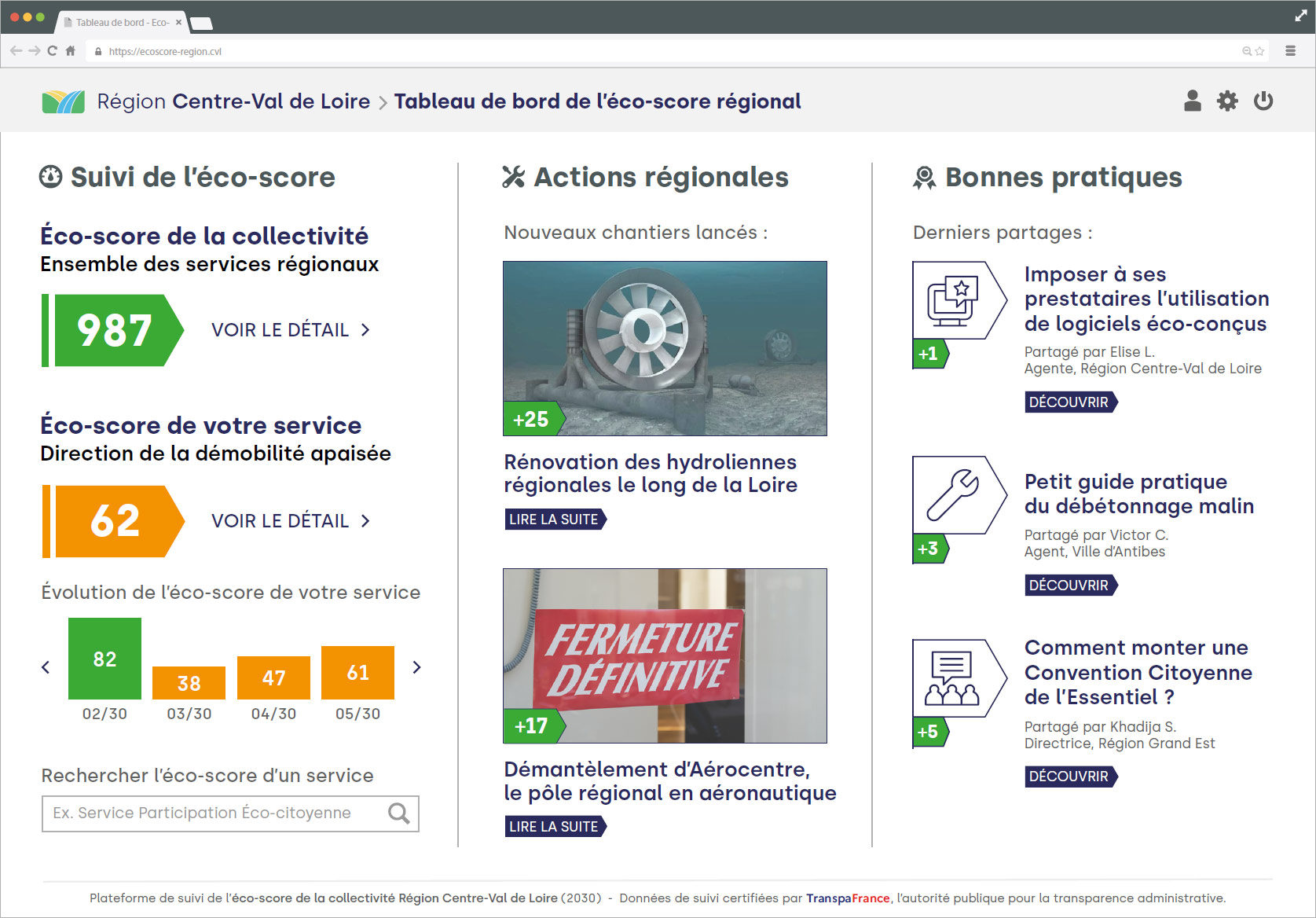
↑ The eco-score of public organisations
The dashboard for monitoring the eco-score of the Centre-Val de Loire Region in 2030.
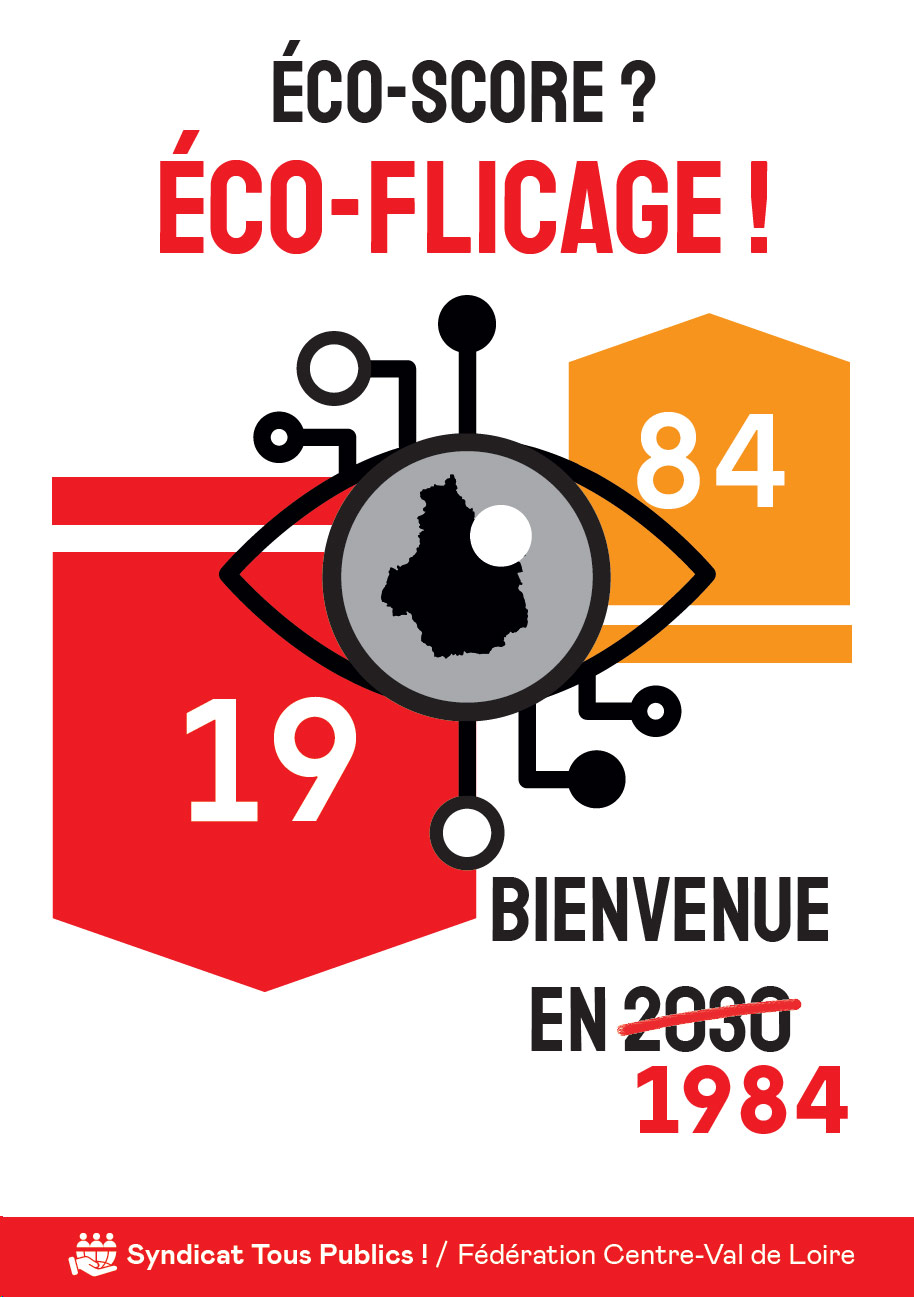
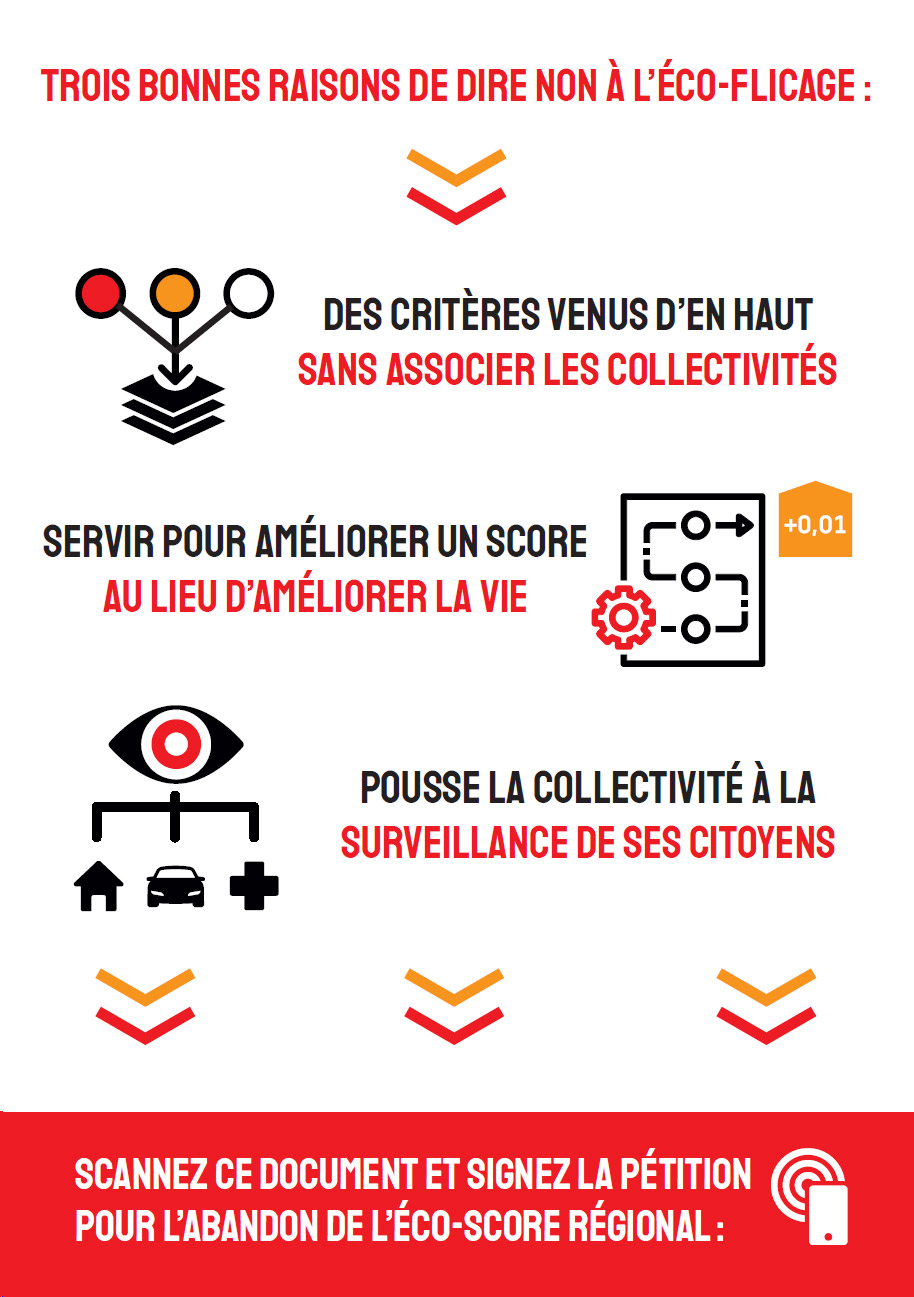
↑ The eco-score of public organisations
A call for protest against ‘eco-policing’ by a union of agents opposed to the scheme.

While other administrations and local authorities have long given in to the allure of chatbots – those conversational robots that have flooded our interfaces – the Centre-Val de Loire Region has chosen to maintain human interaction in its direct relations with residents. This is particularly true for public reception. But how can we combine the best of both worlds: human empathy and the computational power of machines?
To solve this equation, the local government has introduced ‘intermediary agents’. An intermediary agent’s role is to communicate, ‘face-to-face’, the results of an analysis or decision made by an artificial intelligence.
The applications are varied: informing a user of their rights, providing details on training or grant eligibility, or offering a personalised service.
While, in the same time, the system remains simple: the artificial intelligence conducts its analysis and delivers the result to the intermediary agent in the form of a script, which is then communicated verbally to the user.
Excerpt from the scenario
In Flesh and Code

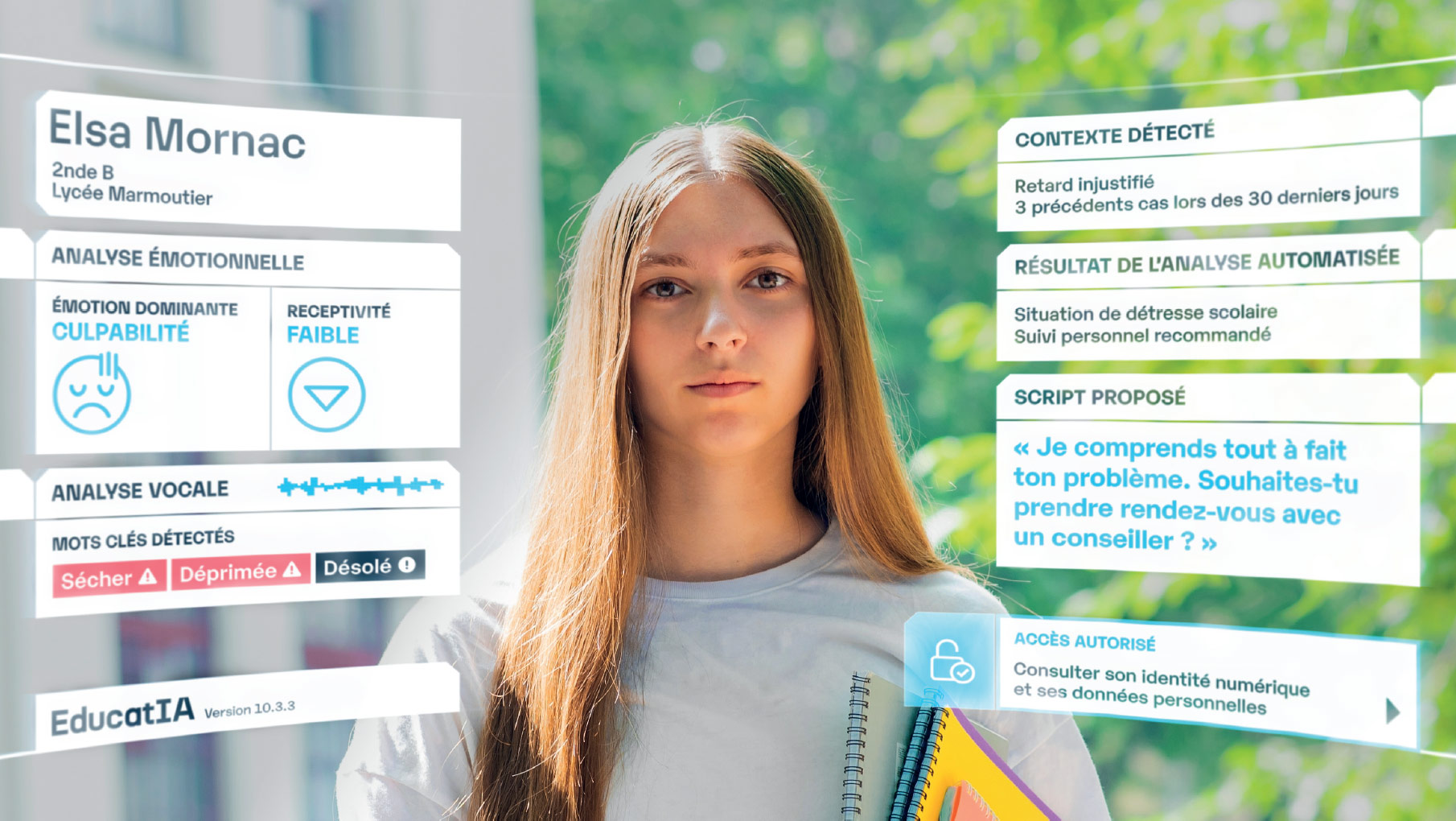
↑ In Flesh and Code
The augmented intermediation interface, available to intermediary agents interacting with the public in a high school.
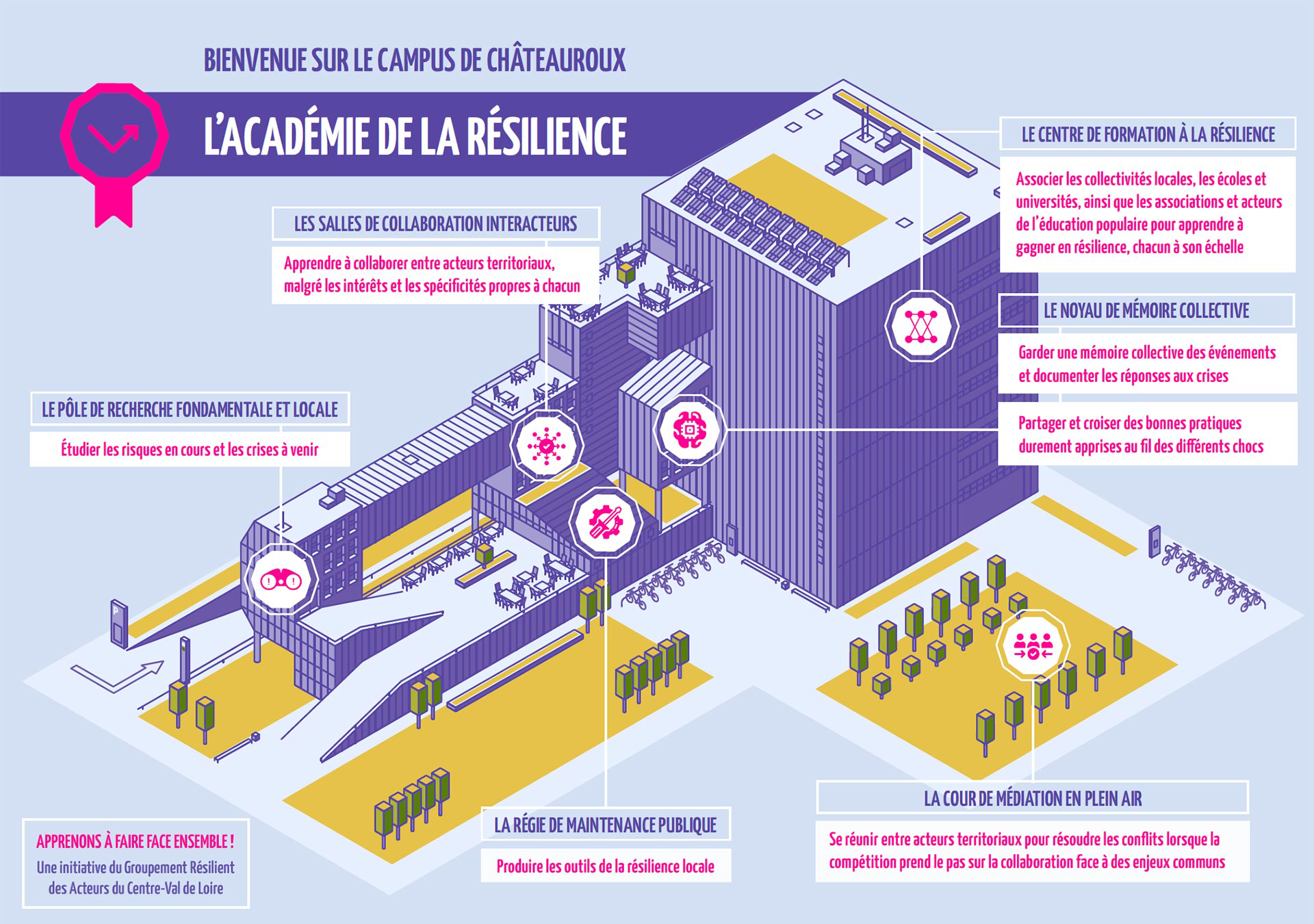
↑ The Resilience Academy
The plan of a Resilience Academy campus in Châteauroux, presenting its spaces and missions.
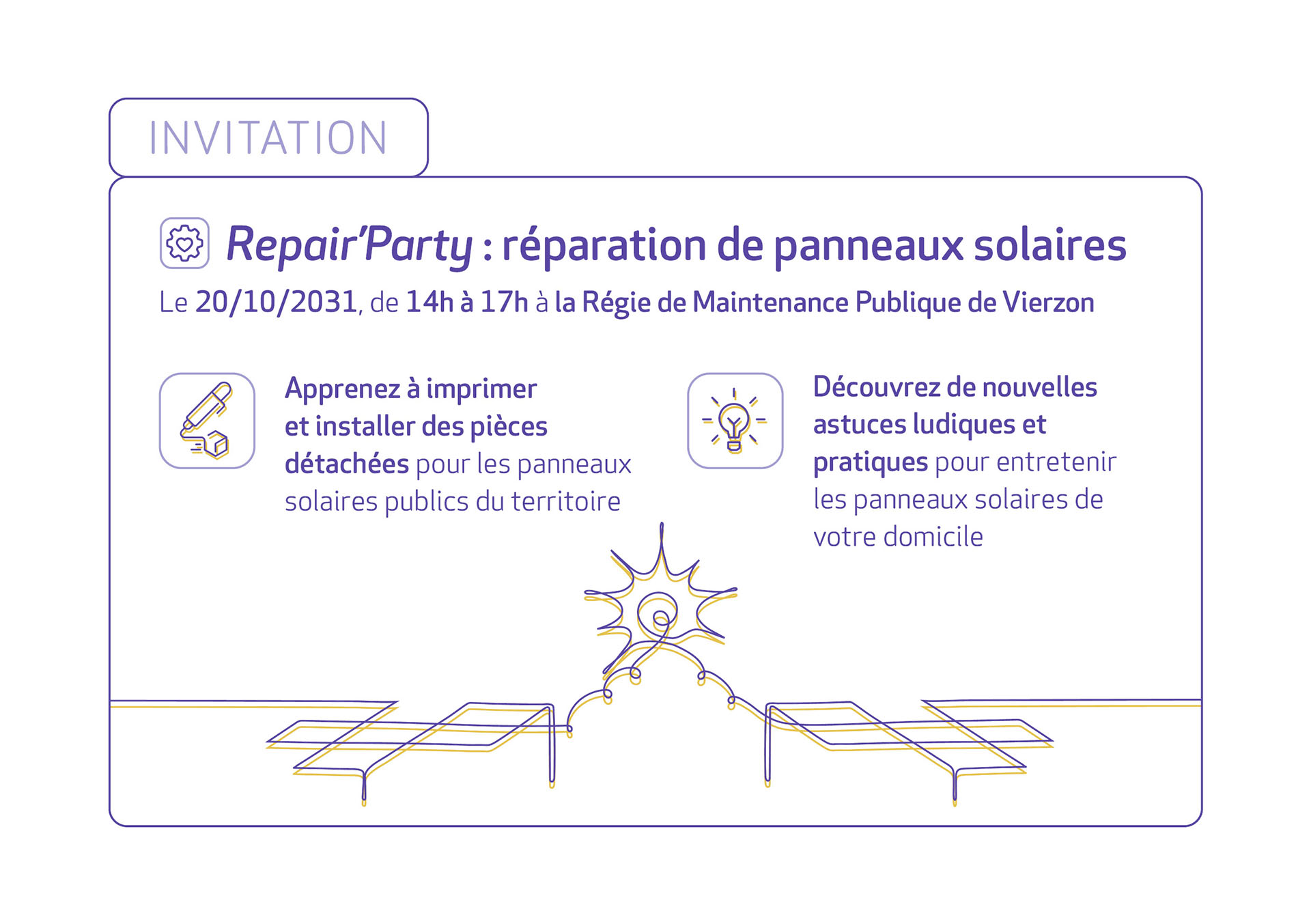
↑ The Resilience Academy
The invitation extended to residents to join a friendly repair workshop, organised by a local public maintenance agency.
During a one-day creative projection workshop, these three speculative scenarios were brought into play. The session brought together a diverse panel of the local administration staff from various services and levels of responsibility. In groups, participants used the design fictions to imagine the profiles of different future agents, defining the new missions, skills, and tools that would enable them to address and respond to each of these three transformations on a daily basis.
The process concluded with a reflective report on the issues, postures, and skills identified during the workshop, offering valuable insights to enrich and adjust the upcoming training plan.
